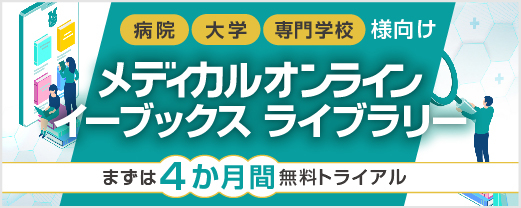アブストラクト
Japanese
| Title | 小児アレルギー性鼻炎に対する舌下免疫療法 |
|---|---|
| Subtitle | 総説 |
| Authors | 川島佳代子 |
| Authors (kana) | |
| Organization | 大阪府立病院機構大阪はびきの医療センター耳鼻咽喉科 |
| Journal | 耳鼻咽喉科免疫アレルギー |
| Volume | 38 |
| Number | 3 |
| Page | 65-71 |
| Year/Month | 2020 / |
| Article | 報告 |
| Publisher | 日本耳鼻咽喉科免疫アレルギー学会 |
| Abstract | 小児アレルギー性鼻炎は低年齢化傾向にある. 環境要因の影響も受けるスギ花粉症についても, 小児期における有病率が著しく増加している. また小児期では, さまざまなアレルギー疾患を合併することが多く, 互いに影響を及ぼしている. アレルギー性鼻炎では, 自然治癒は期待できず, 重症化する前に早期介入することが重要である. アレルゲン免疫療法は, アレルギーの自然経過を修飾できる治療法として期待されており, 気管支喘息発症の抑制や新規アレルゲン感作を抑制することも報告されている. 安全性が高い投与法とされる舌下免疫療法は, 日本においても2018年に小児に保険適用となった. 小児に対する安全性と有効性の検討はまだ十分とは言えないが, 今までの報告では成人と同等とされている. 小児に対する投与では, 患児とその保護者に十分に治療法を説明した上で開始し, 治療開始後も, 感染症罹患時や学校行事などに対してその都度対応を行い, 継続できる環境を整えることが重要である. 舌下免疫療法を含むアレルゲン免疫療法は, 作用機序や長期間の効果などまだ十分に解明されていないことも多い. アレルギー性鼻炎を持つ小児にとって, これらの解明が今後なされることが待ち望まれる. |
| Practice | 臨床医学:内科系 |
| Keywords | アレルギー性鼻炎, 舌下免疫療法, 小児, allergic rhinitis, sublingual immunotherapy, children |
English
| Title | Sublingual immunotherapy for pediatric allergic rhinitis |
|---|---|
| Subtitle | |
| Authors | Kayoko Kawashima |
| Authors (kana) | |
| Organization | Department of Otorhinolaryngology, Osaka Habikino Medical Center, Osaka Prefectural Hospital Organization |
| Journal | Journal of Japan Society of Immunology & Allergology in Otolaryngology |
| Volume | 38 |
| Number | 3 |
| Page | 65-71 |
| Year/Month | 2020 / |
| Article | Report |
| Publisher | Japan Society of Immunology & Allergology in Otolaryngology |
| Abstract | [ABSTRACT] Pediatric allergic rhinitis is occurring at younger ages. Japanese cedar pollinosis, which is also affected by other environmental factors, has a markedly increasing prevalence in childhood. It is also common for various allergic diseases to exist concurrently in childhood, and they will have interacting effects. With allergic rhinitis, spontaneous recovery cannot be expected and it is important to intervene early before the condition becomes severe. Allergen immunotherapy is promising as a therapy that can modify the natural course of allergies, and has been reported to inhibit both the onset of bronchial asthma and sensitization to new allergens. Sublingual immunotherapy is thought to be a very safe administration technique, and in Japan it was approved for national health insurance coverage in 2018. While investigations of its safety and effectiveness in children cannot yet be viewed as sufficient, reports so far have considered them to be the same as in adults. When giving sublingual immunotherapy to children, it is important to provide full explanations of the treatment to patients and their parents, and obtain their understanding. Even after the therapy has been started, it is important to take measures as needed for occasions such as when the child contracts an infectious disease or will be participating in a school event, and to prepare their environment so that they can continue the therapy. Many aspects of sublingual immunotherapy and other allergen immunotherapies, such as their mechanism of action or long-term effects, are still not sufficiently understood. For children with allergic rhinitis, elucidation of these aspects is eagerly awaited. |
| Practice | Clinical internal medicine |
| Keywords | allergic rhinitis, sublingual immunotherapy, children |
- 全文ダウンロード: 従量制、基本料金制の方共に770円(税込) です。
参考文献
- 1) 松原 篤, 坂下雅文, 他. 鼻アレルギーの全国疫学調査2019 (1998年,2008年との比較):速報 - 耳鼻咽喉科医およびその家族を対象として. 日耳鼻 2020;123(6):485-90.
- 2) 馬場 実. アレルギー疾患の発症と展開 - 予知と予防の可能性について. アレルギー 1989;38:1061-9.
- 3) Penard-Morand C, Raherison C, et al. Prevalence of food allergy and its relationship to asthma and allergic rhinitis in schoolchildren. Allergy. 2005;60(9):1165-71.
- 4) Yonekura S, Okamoto Y, et al. The onset of allergic rhinitis in Japanese atopic children:a preliminary prospective study. Acta Otolaryngol. 2012;132(9):981-7.
- 5) Pawankar R, Bunnag C, et al. Allergic Rhinitis and Its Impact on Asthma in Asia Pacific and the ARIA Update 2008. World Allergy Organ J. 2012;5 (Suppl3):S212-7.
残りの22件を表示する
- 6) Wang XD, Zheng M, et al. An increased prevalence of self-reported allergic rhinitis in major Chinese cities from 2005 to 2011. Allergy. 2016;71:1170-80.
- 7) Biedermann T, Winther L, et al. Birch pollen allergy in Europe. Allergy. 2019;74(7):1237-48.
- 8) 増田佐和子, 藤澤隆夫, 他. 乳児期から思春期までの小児におけるスギ花粉感作の実態. アレルギー 2006;55(10):1312- 20.
- 9) Osawa Y, Suzuki D, et al. Prevalence of inhaled antigen sensitization and nasal eosinophils in Japanese children under two years old. Int J Pediatr Otorhinolaryngol. 2012;76(2):189-93.
- 10) Roberts G, Xatzipsalti M, et al. Paediatric rhinitis:position paper of the European Academy of Allergy and Clinical Immunology. Allergy. 2013;68(9):1102-16.
- 11) Dass K, Petrusan AJ, et al. Assessment of sleep disturbance in children with allergic rhinitis. Ann Allergy Asthma Immunol. 2017;118(4):505-6.
- 12) 日本耳鼻咽喉科免疫アレルギー学会鼻アレルギー診療ガイドライン作成委員会. 鼻アレルギー診療ガイドライン -通年性鼻炎と花粉症- 2020年度版 (改訂第9版). 東京:ライフサイエンス;2020. p.38-72.
- 13) Akdis CA, Akdis M. Mechanisms of allergen-specific immunotherapy and immune tolerance to allergens. World Allergy Organ J. 2015;8(1):1-12.
- 14) Roberts G, Pfaar O, et al. EAACI Guidelines on Allergen Immunotherapy:Allergic rhinoconjunctivitis. Allergy. 2018;73(4):765-98.
- 15) Pitsios C, Demoly P, et al. Clinical contraindications to allergen immunotherapy:an EAACI position paper. Allergy. 2015;70(8):897-909.
- 16) Scadding GK, Brostoff J. Low dose sublingual therapy in patients with allergic rhinitis due to house dust mite. Clin Allergy. 1986;16(5):483-91.
- 17) Radulovic S, Calderon MA, et al. Sublingual immunotherapy for allergic rhinitis. Cochrane Database Syst Rev. 2010;(12):CD002893.
- 18) Valovirta E, Petersen TH, et al. Results from the 5-year SQ grass sublingual immunotherapy tablet asthma prevention (GAP) trial in children with grass pollen allergy. J Allergy Clin Immunol. 2018;141(2):529-38. e13.
- 19) Masuyama K, Okamoto Y, et al. Efficacy and safety of SQ house dust mite sublingual immunotherapy-tablet in Japanese children. Allergy. 2018;73(12):2352-63.
- 20) Okamoto Y, Fujieda S, et al. Efficacy of house dust mite sublingual tablet in the treatment of allergic rhinoconjunctivitis:A randomized trial in a pediatric population. Pediatr Allergy Immunol. 2019;30(1):66-73.
- 21) Zhang YZ, Luo J, et al. Efficacy and safety of sublingual dust mite drops in children with mono- or polysensitized allergic rhinitis. Am J Otolaryngol. 2019;40(5):755-60.
- 22) 湯田厚司, 小川由起子, 他. スギ花粉舌下免疫療法治療薬シダキュア(R) 69例の初年度治療成績. アレルギー 2019;68(8):958-65.
- 23) 川島佳代子, 奥野未佳, 他. 舌下免疫療法を開始する患児の保護者に対する意識調査. 耳鼻免疫アレルギー 2020;38(2):29-36.
- 24) Senna G, Lombardi C, et al. How adherent to sublingual immunotherapy prescriptions are patients? The manufacturers' viewpoint. J Allergy Clin Immunol. 2010;126(3):668-9.
- 25) Incorvaia C, Rapetti A, et al. Importance of patient's education in favouring compliance with sublingual immunotherapy. Allergy. 2010;65(10):1341-2.
- 26) 川島佳代子, 山本雅司, 他. 小児に対する舌下免疫療法初回集団投与の試み. 小児耳鼻咽喉科 (印刷中).
- 27) Arasi S, Corsello G, et al. The future outlook on allergen immunotherapy in children:2018 and beyond. Ital J Pediatr. 2018;11;44(1):80.


